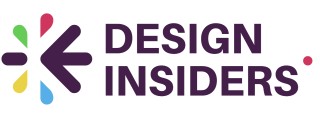
Understanding the Importance of Employee Reviews in Design
Recognizing the Impact of Evaluations on Design Teams
The world of design is ever-evolving, making it crucial for managers and team members alike to embrace the practice of regular employee reviews. These evaluations can serve as a cornerstone for performance management, helping to align individual goals with broader team objectives. By understanding the significance of such reviews, design leaders can pave the way for enhanced professional development and job satisfaction across their teams. Further, well-structured employee review processes provide a framework not only for assessing past performance but also for setting expectations and goals for future work. As a result, they foster a culture of accountability and continuous improvement.Performance Reviews: A Catalyst for Growth
At its core, an employee performance evaluation is more than just a formality or an annual checkbox. Well-documented evaluations can aid in identifying areas for improvement, showcasing employee achievements, and pinpointing specific factors that influence a team’s performance throughout the year. For design professionals particularly, the atmosphere is one of experimentation and creativity. It's a field where feedback and evaluation form the backbone of professional growth. The lessons learned from reviews can help well-rounded designers not only refine their skills but also adapt and excel in a fast-paced industry.The Need for Structured Review Templates
The use of thoughtfully crafted review templates can significantly enhance the review process. Such templates ensure that evaluations remain consistent and comprehensive, covering all critical aspects of performance and potential areas for growth. Managers and employees benefit from a structured approach as it alleviates the ambiguity often associated with performance discussions. When crafted effectively, these review templates can act as a guide throughout the evaluation process, ensuring that key performance indicators and developmental goals are documented. This structured approach can also serve as a foundation for subsequent evaluations, facilitating a cycle of ongoing improvement and success within design teams. For more insights on optimizing workflows for design teams, including useful tools, explore our guide to optimizing workflows for UX/UI designers.Key Components of an Effective Employee Review Template
Building a Comprehensive Evaluation Framework
- Establish Clear Objectives: Clearly define the goals the review template aims to achieve. These could range from assessing current performance levels to identifying areas for professional development.
- Structure the Template: Organize the template in a way that guides managers and team members through a logical evaluation process. This might include sections for reviewing past achievements, setting future goals, and identifying areas of improvement.
- Performance Criteria: Specify the key performance metrics that are relevant to the design team’s goals. This informs both managers and employees of what is expected in terms of work quality and productivity.
- Customizable Sections: Ensure flexibility by including customizable fields that allow managers to personalize the review template according to individual team members' roles and projects.
- Rating System: Include a consistent rating system within the evaluation form to standardize how performance is measured across the team. This uniformity helps in drawing comparative insights.
- Space for Feedback and Comments: Incorporate areas where managers and employees can provide qualitative feedback. This addition encourages open dialogue and more comprehensive performance reviews.
- Incorporate Development Plans: Align the evaluation template with professional development initiatives that promote continuous improvement. This could involve setting realistic development goals for the year ahead.
Each component of the employee review template plays a crucial role in enhancing the overall performance management process. Organizing these elements logically can turn review sessions into more meaningful exercises that benefit both the team and the organization. You might also consider optimizing your design workflow to ensure that these reviews don't disrupt the creative process.
Tailoring the Review Process for Design Professionals
Customizing the Evaluation Process for Design Teams
Creating an effective employee review process involves tailoring it specifically for design professionals, ensuring it aligns with the unique demands and aspirations of the field. This customization facilitates meaningful feedback, fosters growth, and aligns individual goals with team objectives. Firstly, it's crucial to recognize that design is inherently subjective, which can make evaluation challenging. Managers need to develop a review template that accommodates the qualitative aspects of design work. This might include sections dedicated to discussing creativity, innovation, and problem-solving skills, rather than solely relying on quantitative metrics. Additionally, the review process should account for both short-term and long-term goals. Design projects can vary significantly in scope and duration, so it's important to incorporate flexible evaluation forms that can be adapted for quarterly performance reviews as well as annual performance assessments. This adaptability ensures ongoing professional development and helps identify areas for improvement. Design team members may also benefit from peer evaluations as part of the review process. Insights from fellow designers can provide valuable perspectives, highlighting strengths and identifying potential areas for improvement. Incorporating peer reviews should be done thoughtfully, ensuring confidentiality and constructiveness to maintain a positive team dynamic. To further enhance the review process, managers can integrate a template download option for designers. This digital form encourages ongoing documentation of achievements and efforts throughout the year, streamlining performance management and making the annual performance evaluation more comprehensive. Lastly, to assist in aligning the review process with broader business goals, managers might consider consulting external resources or professionals to guide them. For example, insights from a UX design consultant can be beneficial in enhancing user experience and integrating user-centered design principles into the review templates. Overall, by customizing the employee evaluation process, managers can better support the professional growth of their design team, which ultimately benefits the entire organization by fostering a more innovative and effective work environment.Incorporating Feedback Mechanisms for Continuous Improvement
Building a Feedback-Rich Environment
Creating an environment where feedback is continuous and constructive is pivotal for fostering growth in design teams. This can significantly enhance the employee evaluation process, aiding in the pursuit of both personal and professional development goals. To embed feedback mechanisms within your performance review templates, consider the following strategies:- Establish Regular Check-ins: Quarterly performance reviews often provide crucial checkpoints. However, incorporating more frequent, informal check-ins can help create a comfortable dialogue between managers and employees.
- Develop a Two-Way Feedback System: Encourage employees to provide feedback on management and processes. This not only helps in identifying areas of improvement but also empowers employees, fostering a sense of ownership in their roles.
- Utilize Technology: Online platforms and evaluation forms facilitate ongoing feedback. Such tools can automate parts of the review process, making it easier to maintain an active, evolving feedback loop.
Setting Clear Goals and Benchmarks
Embedding clear benchmarks in your review template can guide employees towards continuous improvement. This helps align employee evaluations with both the team's and individual's goals.- Define Specific Performance Goals: Performance management systems should include clearly defined, achieveable objectives for each role within the team. This enables tailored performance evaluations.
- Measure Progress Consistently: Use evaluation forms to track and document progress. Regular updates ensure both team members and managers have a shared understanding of achievements and areas needing improvement.
Overcoming Common Challenges in Design Employee Reviews
Addressing Obstacles in Design Employee Assessments
Design employee reviews often encounter certain obstacles that can hinder their effectiveness. Successfully overcoming these challenges is vital for fostering a productive work environment where design team members can flourish in their roles. Below are some common issues faced during the review process and strategies to navigate them:
- Subjectivity in Performance Evaluation: Design work is inherently subjective, making it difficult to maintain objective performance evaluations. Managers can counter this by leveraging clearly defined goals and expectations as benchmarks, complementing feedback with tangible outcomes and metrics related to professional development.
- Diverse Skill Sets Within the Team: A single template may not suit all employees due to the varying expertise present within design teams. Customizing evaluation forms for different roles (such as graphic designers, UX/UI specialists, etc.) ensures each role's specific competencies are effectively assessed.
- Fostering an Open Feedback Culture: Teams might hesitate to offer open feedback due to apprehensions about criticism. Encouraging a culture of positive, constructive criticism, where feedback is seen as a means for continuous improvement rather than criticism, can help immensely.
- Balancing Creativity and Performance Metrics: The creative nature of design jobs does not always align seamlessly with traditional performance metrics. Managers can focus on setting creative goals and milestones that align with the team’s innovation and overall business objectives.
- Ensuring Regular and Fair Reviews: Conducting only annual performance reviews may detach managers from the ongoing progress of their team members. Adopting a combination of quarterly performance assessments alongside annual evaluations ensures a thorough understanding and documentation of employee development.
By addressing these challenges with strategic solutions, managers can help improve the review template’s efficacy, thereby enhancing employee performance and creating a thriving design team environment. With refined review processes, the focus remains on growth and areas improvement, helping design professionals meet their highest potential.
Best Practices for Implementing Employee Review Templates
Implementing Employee Review Templates Successfully
To manage performance evaluations effectively, it's essential to implement employee review templates meticulously. Here are some best practices to ensure a seamless review process:- Incorporate Clear Objectives: Clearly define the goals of the performance reviews. Specify what each evaluation aims to achieve, such as identifying areas for improvement or acknowledging job performance successes.
- Link Reviews to Professional Development: Connect the feedback process directly with the employee's development journey. Whether it's quarterly performance evaluations or annual assessments, make sure they contribute to long-term professional growth.
- Utilize Comprehensive Evaluation Forms: Use detailed evaluation forms that encourage comprehensive feedback. These forms should be designed to capture various aspects of an employee's performance, going beyond just numbers or ratings.
- Facilitate Open Communication: Managers should encourage employees to share their perspectives and engage in open dialogues during the review process. This helps in building trust and transparency within the team.
- Regularly Update Templates: Keep your review templates updated to reflect the evolving needs of your team and the design industry. This might involve downloading new template versions or customizing them based on specific team member requirements.
- Follow a Consistent Process: Ensure that the review process remains consistent across all team reviews. Uniformity in performance management helps in fair evaluations and avoids potential biases.














